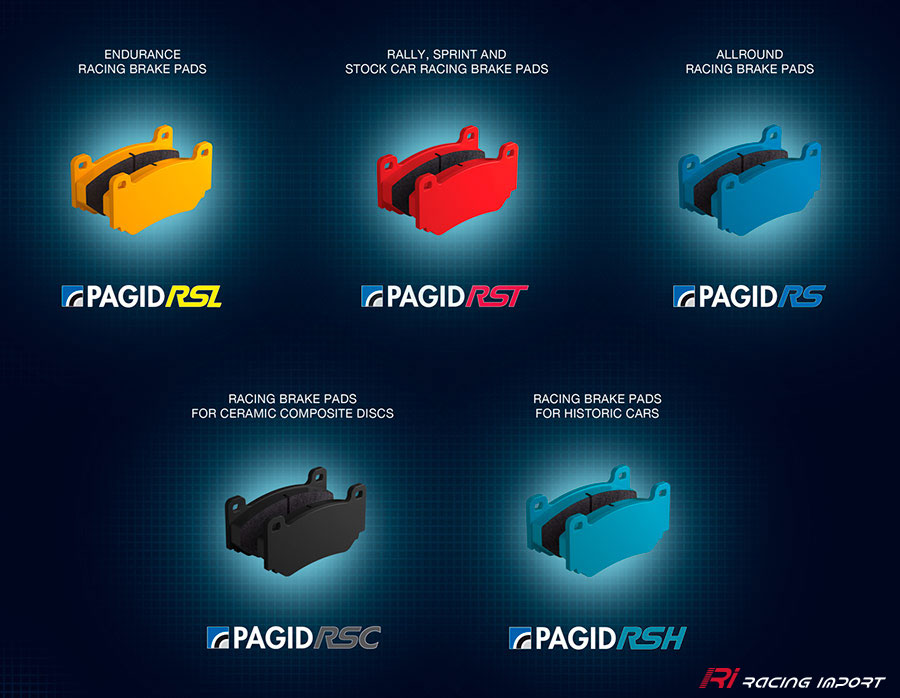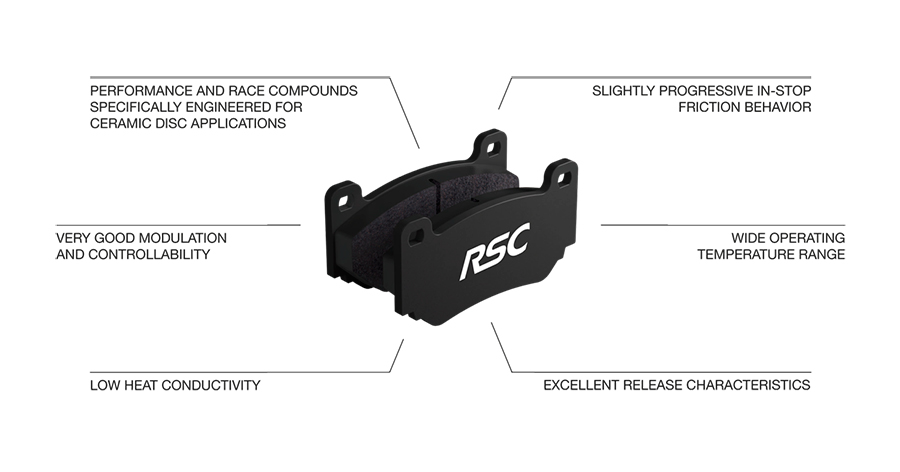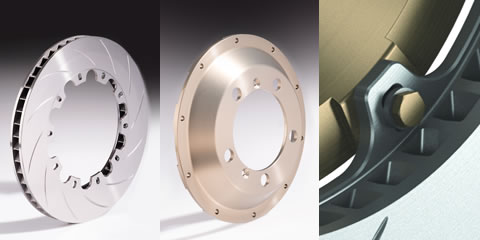
PAGID RACING
Get the most out of your brakes by saving money
This week in our blog we inform you about Pagid Racing brake pads.
Pagid Racing brake pads are designed to produce the highest possible performance levels in a wide range of operating conditions.
Available in many formulations of different materials.
They fit a wide range of competitions and high performance championships.
THE 4 STAGES CONTROLLED BY COMPUTER IN THE PROCESS OF MANUFACTURING THE PRODUCT
1. The pads will be geometrically aligned.
This is necessary for optimal contact, it is operated at constant pressure and optimum setting temperatures.
Braking is defined exactly with mandatory breaks.
2. Heating.
Through the continuous increase in temperature, cracks are avoided.
Braking and intermediate breaks are performed at fixed defined temperatures (within a range already analyzed initially).
3. Bedding.
The objective of the shooting in the higher temperature phase, will be to eliminate the initial fading (fedding).
This process runs at very high temperatures and there is a significant weight loss of the whole pill.
4. Cleaning.
The tablets and discs are cleaned with well-defined stops of the remaining compound residues and unusable remains.
COMPETITION FRICTION COMPOUNDS
* RST:
Material for use in Sprint and Rally races.
* RSL:
Material for use in endurance races.
* RS:
Material for all types of use in competition, especially in historic vehicles.
* RSC:
Material for use in vehicle applications with Carbon Ceramic discs.
* RSH:
Improved application specifically for historic vehicles.
PAGID Racing compounds have a very high content of non-ferrous (ceramic) materials.
The difference with the metallic compounds of the competition is the superior thermal insulation and the greater resistance to the heat combined with low thermal conductivity, which reduces the transfer of heat to the clamp (up to 60 ° C) and avoids the boiling of the fluid.
All PAGID Racing compounds are designed to minimize system wear between pad and disc, while maintaining optimum bite, brake modulation and pedal feel.
All friction compounds meet or exceed all current environmental standards of the automotive industry.
DESIGN OF THE PLATE / STEEL SUPPORT PACING RACING
PAGID Racing employs dual retention systems, with an adhesive bond and a patented mechanical system.
The mechanical system consists of bronze bolts that are welded directly to the back plate to ensure positive retention between the pad compound and the back plate.
These bronze bolts are softer than the brake disc (rotor) and wear out as the pellet is consumed without causing damage to the disc.
ASSEMBLY INSTRUCTIONS PAGID RACING PADS
- The new brake pads MUST move freely in the clamp guides.
- A poor release and a greater wear of the tablet can produce insufficient slack.
- Always use the appropriate pad shape to ensure a correct fit.
- When installing new pads, ALWAYS make sure the pedal is pumped up to control the brake caliper piston travel before driving the vehicle.
- Never place hot friction surfaces in contact with the floor to avoid contamination of the pad or discs.
BRAKE DISCS
PAGID Racing brake pads can be used on solid, slotted or transversely perforated discs.
If possible, the pads should be placed on discs that were previously used with the same friction material.
However, the friction faces of the disc must be flat and in good condition.
If you put new pads on new discs, concentrate first on the running of the discs.
For discs, see the disc manufacturer’s own instructions.
The life of the disc is improved by allowing the disc to cool to room temperature after shooting.
RUNNING PROCEDURE
WHY DO YOU HAVE TO ROLL THE PADS AND DISCS?
- To align the surface of the tablet with the surface of the brake disc and ensure total contact.
- To transfer a layer of friction material on the faces of the brake disc to achieve maximum performance.
- Burn the volatile elements in the friction compound to have the initial fading (green) during the adaptation and not during the race.
If the pads do not fit correctly according to the sequence mentioned above, the brake system will not reach its maximum friction performance, wear behavior and pedal feel.
Improper adaptation can also cause vibrations.
Unlike discs, the pads do not require cooling after taxiing for optimum performance / longevity.
RECOMMENDATIONS FOR THE CORRECT ADAPTATION OF PILLS
1. Start of braking.
- Creating a perfect contact pattern between the disc and the surface of the brake pad.
- 10 stops with low pressure and low temperature from 150 km / h (90 MPH) to approximately 80 km / h (50 MPH).
- The distance between each brake stop is approximately 600 – 800 meters (600 to 800 yards).
2. Heating.
- Heat to introduce central heat throughout the brake system.
- A sequence of 5 stops with medium to high pressure from 180 km / h (112 MPH) to approximately 60 km / h (37 MPH) with a maximum acceleration between stops.
- After the last stop, cool for 3 minutes with a speed preferably not higher than 100 km / h (62 MPH)
3. Recovery
- 3 to 5 stops with low pressure from 150 km / h (90 MPH) to approximately 80 km / h (50 MPH).
- The distance between each brake stop is approximately 600 – 800 meters (600 to 800 yards).
If you are interested in purchasing PAGID Racing brake pads and discs you can contact us through our e-mail info@racingimport.com, our telephone 91 471 61 14 and through our website www.racingimport.com









